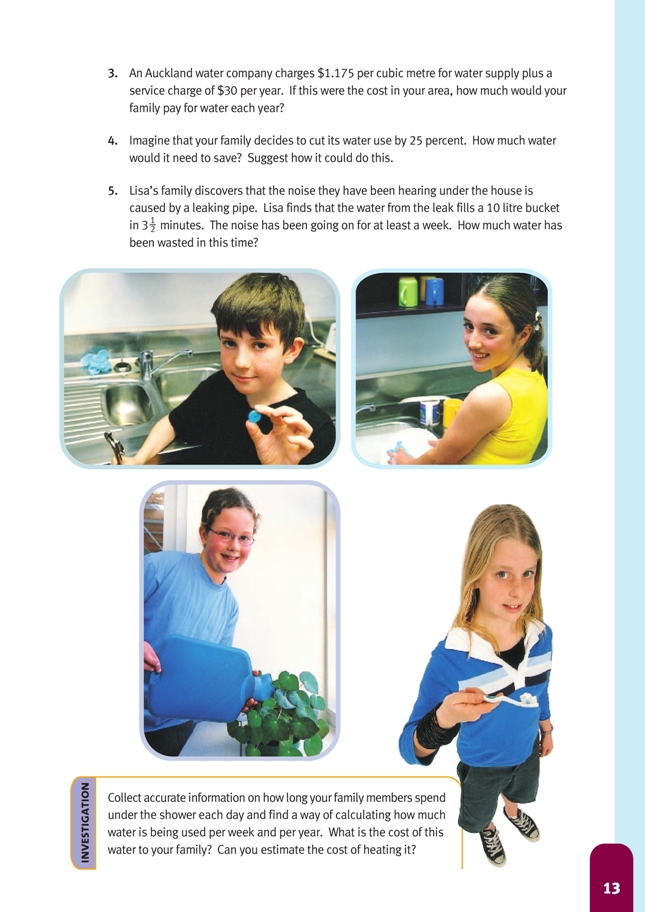This is a level 4 statistics activity from the Figure It Out series.
A PDF of the student activity is included.
Click on the image to enlarge it. Click again to close. Download PDF (697 KB)
construct a graph from a table
describe data from a table
FIO, Level 4, Statistics, Book One, Down the Plughole, pages 12-13
A computer (optional)
A copy of the table (page 12 in Students' Book)
This activity integrates work from a number of curriculum strands. Your students will need to have good multiplication skills in order to attempt it and will need to be able to work with time, fractions, decimals, and percentages. This means they should at least be at stage 7 (advanced multiplicative part–whole) of the Number Framework. They should also have the skills to draw a range of quality data displays and be able
to identify which graph type is appropriate to the data. For an explanation of what is meant by quality graphing, see the notes for Future Options (pages 2–3 of the students’ book), and for more on choosing appropriate graph types, see the notes for Collect and Reflect (pages 6–7 of the students’ book).
The table in the activity has a large number of blank cells, and the students should only fill out those that help them with their calculations. For example, “average times per day” is meaningless when it comes to “topping up pool”. This is a water use that may happen once every 1 or 2 weeks in summer and never in winter.
Point out to your students that, when they are writing their paragraph on “Where does the water go?”, they are to base their comments on the information from the table and graph.
There are a number of very useful websites related to water usage and water conservation, and local authorities usually have printed information that they are happy to give students who are doing a related project.
The investigation challenges students to work out the water and heating costs of the family’s daily showers. Working out the cost of heating the water will be a major challenge if done experimentally. An alternative approach is to use averaged data from a media source, for example, Consumer magazine (June 2003), and apply this information to an individual household.
Answers to Activity
1. Answers will vary depending on the number of occupants per household and whether they have a garden, pool, and so on. Usage is likely to be between 1 000 and 2 000 litres per person per week.
2. a. Answers will vary.
b. Answers will vary. A bar graph is likely to be a good choice.
c. Answers will vary but should include reference to total usage and the major uses of water.
3. Answers will vary.
4. Answers will vary but may include fitting a water efficient shower rose, taking shorter showers, brushing teeth without the tap running continuously, not washing clothes after one use, using the dishwasher only for a full load, fitting a dual-flush
toilet cistern, and fitting a timer to the garden sprinkler.
5. 28.8 m3. (Minutes in a week: 7 x 24 x 60 = 10 080.
Bucketfuls: 10 080 ÷ 3.5 = 2 880. Total litres: 2 880
x 10 = 28 800. Volume in cubic metres: 28 800 L = 28.8 m3. )
Investigation
Answers will vary.

